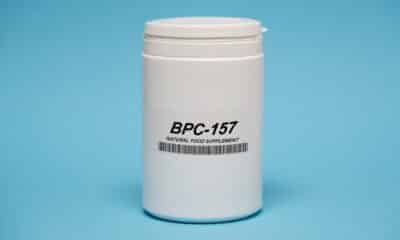Dog Breeding — Innovation, Tradition, and Care for the Future
Application of Modern Methods in the Breeding Program of “OPTIMISTIK BORDER” (Border Terrier)
“When science is combined with love, the very Border Terriers appear that inspire us — optimistic, devoted, and flawless …”
Modern dog breeding harmoniously combines new technologies with our love for a chosen breed.
Throughout history, a breeder has been not only a guardian and curator of its future, but also an artist, a creator, an architect of life. Today, this role has become even broader — a breeder is at once an engineer, a geneticist, a statistician, at times a doctor, occasionally an accountant, and sometimes even an actor (but that, of course, is a story about Dog Shows — I will tell it another time).
At the OPTIMISTIK BORDER kennel, founded twenty years ago and, since 2015, directed by Elena Sekach, we apply a scientific approach and the most progressive methods to preserve what makes the Border Terrier unique — its health, vitality, and spirit.
Genetics — the Foundation of Responsible Breeding
We perform genetic testing on all breeding dogs before any mating is planned.
This allows us to exclude carriers of hereditary diseases such as SLEM (Spongiform Leukoencephalomyelopathy – “shaking puppy syndrome”) and PRA (Progressive Retinal Atrophy).
SLEM is a rare inherited disease of the muscles and nervous system that manifests in puppies as tremors, weakness, and loss of coordination, and almost always ends fatally. Puppies are affected only when both parents, apparently healthy, carry the defective gene — hence the necessity of testing every potential sire and dam.
At OPTIMISTIK BORDER, all breeding dogs are carefully screened for SLEM markers to eliminate the risk of transmission.
PRA, progressive retinal atrophy, leads to gradual blindness.
Genetic research helps to identify carriers whose offspring would otherwise lose sight as they mature.
Each breed has its own list of hereditary conditions — some very long — but the Border Terrier is comparatively fortunate. Still, it is the breeder’s duty to guarantee sound genetics to future generations.
DNA testing is also used for individual identification — of both the dog and its progeny — ensuring accurate pedigree verification.
In today’s world, every leading stud dog and brood bitch possesses a genetic passport — a full DNA profile.
Diagnosis of Hereditary Diseases
Ophthalmology.
- There are eye disorders for which DNA tests do not yet exist.
- Cataracts may appear in a puppy or develop later in life.
- Abnormal eyelid structure or misdirected eyelashes can injure the eye and may also be inherited.
- Regular instrumental eye examinations detect such problems at an early stage and allow breeders to adjust their breeding programs, excluding carriers from reproduction.
Cardiology.
The Border Terrier is a robust, athletic breed, historically developed for work underground, capable of long hours of strain.
Yet even these hardy dogs can face heart defects.
A complete cardiac evaluation, including echocardiography (ultrasound of the heart), should be performed on any puppy that tires easily or lags behind its littermates.
At over twelve months of age, every breeding dog receives a cardiac health certificate and only then is used in breeding.
Our mission is to preserve the working potential of the breed — a heritage of more than a hundred years — even if today those qualities are more often expressed in sports than in hunting.
Orthopedics.
A serious problem for many breeds is hip dysplasia, which causes pain, lameness, and reduced mobility — so vital to every dog.
Diagnosis requires X-ray imaging evaluated by a certified specialist, who assigns each joint a letter grade.
It is ideal when the certificate lists an A–A result.
Terriers may also be prone to patellar luxation (dislocation of the kneecap). The test is performed manually, and upon completion the dog receives a Certificate of Patella Examination.
Neurology.
We have already spoken of SLEM, but there is also the epileptoid cramping syndrome.
If a dog develops epilepsy — even in adulthood — all of its descendants must be withdrawn from breeding. Paroxysmal dyskinesia is a milder neurological condition linked to gluten sensitivity.
Laboratory testing can reveal gluten intolerance; decisions about using such a dog for breeding are made individually, as the disorder is not fully studied and its inheritance remains unproven.
Using the results of DNA analyses and veterinary examinations, we select breeding pairs so that the offspring are not only beautiful but also genetically healthy.
Ultrasound and Endoscopy
Regular ultrasound examinations help monitor internal organs and the condition of pregnant females.
Border Terriers show a predisposition to gallbladder mucocele — an accumulation of mucus in the gallbladder.
Without timely diagnosis it can lead to serious complications, including obstruction of bile ducts and liver inflammation.
Ultrasound must therefore become a routine tool for every responsible breeder.
Endoscopy is a gentle yet highly informative diagnostic method that reveals pathological processes at an early stage.
It is also applied in reproduction when natural mating is difficult or ineffective.
Modern Reproductive Technologies
Many kennels today successfully use artificial insemination and semen cryopreservation.
These technologies preserve rare bloodlines, make it possible to use outstanding sires from other countries, and increase genetic diversity.
Before insemination, tests are performed to measure progesterone levels, and ultrasound monitoring of follicles determines the optimal timing.
Digital Breeding Tools and Pedigree Analysis
Modern kennel-management software allows breeders to maintain detailed pedigrees, analyze degrees of kinship and inbreeding coefficients, and avoid the “popular sire” effect while preserving genetic variety.
For every line, data on health tests, DNA results, and show achievements are recorded.
We study each dog’s ancestry thoroughly in order to make objective predictions for future generations.
Conscious Breeding — the Path of “OPTIMISTIK BORDER”
Our goal is not merely to produce puppies with excellent conformation, but healthy dogs with true Border Terrier temperament, ready to bring joy to their owners for many years.
Innovative technologies, continuous health monitoring, and careful pedigree research give us confidence that every new litter is a step forward for the breed.
In October 2025, OPTIMISTIK BORDER GREEN HOT JALAPENO PEPPER was awarded Best of Breed by Exhibitor among Border Terriers at the world’s premier terrier event — the Montgomery Show — a significant achievement and a proud recognition of our work.
OPTIMISTIK BORDER is a place where technology serves nature, and care for every puppy and adult dog becomes the standard of professional breeding.
Responsible breeding must become an axiom for every breeder, regardless of breed or country.
Elena Sekach
Founder and Director, OPTIMISTIK BORDER Kennel














